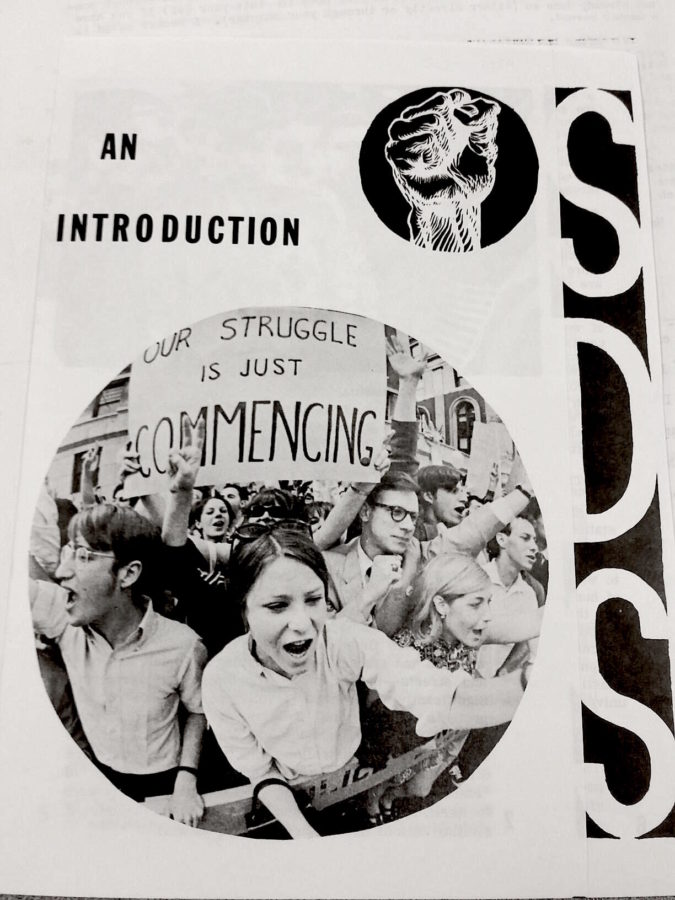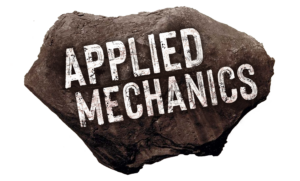By Rebecca Wright
 A few weeks ago, Jess and I spent five days in Ann Arbor, MI, the first of three visits Applied Mechanics will make this academic year as part of a research residency with UMS (the University Musical Society, the presenters attached to the University of Michigan.) Our prompt for this residency is to work on a potential piece about the University of Michigan, that may be presented as part of its bicentennial celebration in fall 2017. More broadly, our task is to engage in our creative process in ways that include the U of M community and UMS audiences. As our process is always research-driven, with an early stage that involves amassing print and other media on our stated theme, followed by a stage of creative response and group brainstorming, this residency is a great fit for us, and we’re so excited to continue the work in such a supportive setting. The good people at UMS treated us royally, and connected us to tons of great people and resources.
A few weeks ago, Jess and I spent five days in Ann Arbor, MI, the first of three visits Applied Mechanics will make this academic year as part of a research residency with UMS (the University Musical Society, the presenters attached to the University of Michigan.) Our prompt for this residency is to work on a potential piece about the University of Michigan, that may be presented as part of its bicentennial celebration in fall 2017. More broadly, our task is to engage in our creative process in ways that include the U of M community and UMS audiences. As our process is always research-driven, with an early stage that involves amassing print and other media on our stated theme, followed by a stage of creative response and group brainstorming, this residency is a great fit for us, and we’re so excited to continue the work in such a supportive setting. The good people at UMS treated us royally, and connected us to tons of great people and resources.
On this first visit, we dug into archives and met with students. U of M has the biggest collection of social justice ephemera in the country, the Labadie Collection, whose curator, Julie Herrada, is an absolutely amazing woman; Julie gave generously of her time orienting us to the archive, and we got to spend hours looking at posters, membership dues letters, pamphlets, and memos from social movements across the ages. The daily-ness of these tasks of action were moving: all these small, mundane gestures that amounted to big waves of change. Our time at the Labadie felt especially profound given that we were there just days after the election: for a long time, people have been working with great energy and in small ways as well as big to further the reach of justice and fight back the forces of bigotry and inequality. We can and must be part of those efforts. Reading their newsletters and zines did not feel like comfort: it felt like a call to action.
We also met with the very gracious and friendly archivists at the Bentley Library, U of M’s archive of itself and of Ann Arbor. It’s fascinating how well the institution has documented itself, and how the narrative it has built about itself over time actively shapes its present. Many of the students we talked to had a lot to say about the distance between U of M’s image and their experience of it, both as an institution and as a setting for their daily lives. This distance—between the legends of a place and the realities of life in it—is fertile ground for our research. It relates to the material we’re looking into for the 2018 episode of Chronotope, which will look at the construction of cultural narratives, and how people document their world in different forms.
The students we met, talked with, and worked with in Ann Arbor blew us away. We visited theater classes and history classes, met with UMS’s student board, and held an informal gathering of students for a group interview. Each meeting brought us into contact with thoughtful, inquisitive, generous, creative young people. People who were eager to talk about their concerns, both global and personal, and who were seeking ways to make these concerns active. We were there November 9-13 and the fear and confusion was palpable. Many of the students we talked to had been up all night the night before talking, crying, processing. The first day I arrived, there was a big rally on the Diag, a square in the middle of campus, bordered by libraries and large academic buildings. I was grateful to stand among the students as they chanted. It was cold. It was dusk. Maria had driven me to the airport that morning and we’d both cried in the car. I’m sure our work at U of M will continue to be shaped by the moment in which it’s taking place: that is how narrative works. Stories don’t happen in vacuums: they are forged by their surrounding contexts, as much as by the individual or collective minds that author them. This is a good moment to consider what forces are at work when stories are constructed, how we can take control of those forces, and what stories we want to construct. I am grateful for the work ahead of me and for the people I will work with.
[Best_Wordpress_Gallery id=”40″ gal_title=”U of M Research Photos”]
